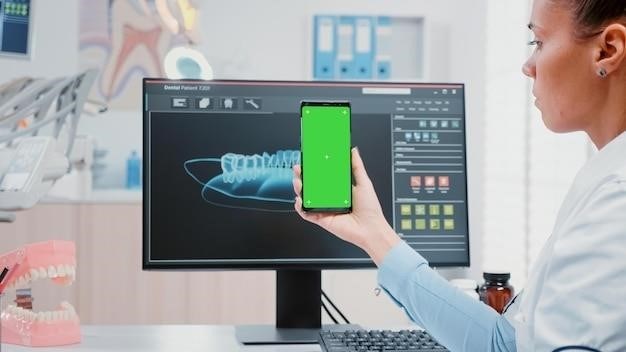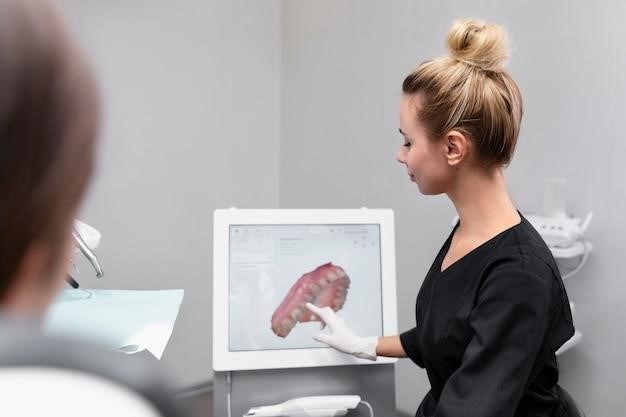
Guided Tissue Regeneration (GTR) Dental Codes⁚ A Comprehensive Overview
This overview explores the diverse range of dental codes associated with Guided Tissue Regeneration (GTR) procedures. We will delve into the specifics of various codes, clarifying their applications in different clinical scenarios involving natural teeth, implants, and edentulous areas. Understanding these codes is crucial for accurate billing and reimbursement.
Guided tissue regeneration (GTR) is a sophisticated periodontal and implant surgical technique designed to promote the regrowth of lost periodontal tissues, including bone and gum tissue. This innovative approach utilizes barrier membranes—either resorbable (dissolving) or non-resorbable (requiring removal)—to create a protected environment conducive to tissue regeneration. The membrane acts as a physical barrier, preventing the rapid overgrowth of epithelium (gum tissue) and allowing for the undisturbed growth of bone and connective tissue. GTR is particularly beneficial in treating periodontal defects, peri-implant defects, and edentulous areas where bone regeneration is needed before implant placement or for ridge augmentation. The choice between resorbable and non-resorbable membranes depends on the specific clinical situation and the preferences of the treating dentist. The procedure often involves flap surgery to access the affected area, followed by meticulous membrane placement and closure. Post-operative care is essential for optimal healing and tissue regeneration.
CDT Codes for GTR⁚ A Detailed Breakdown
The Current Dental Terminology (CDT) code set provides specific codes for reporting GTR procedures. These codes differentiate between the use of resorbable and non-resorbable barriers, as well as the location of the procedure (natural teeth, implants, or edentulous areas). Accurate coding is vital for proper claim processing and reimbursement. For natural teeth, codes such as D4266 (resorbable barrier) and D4267 (non-resorbable barrier) are commonly used, specifying the type of membrane employed. In implant cases, codes like D6106 (resorbable barrier) and D6107 (non-resorbable barrier) are utilized. For edentulous sites, codes such as D7956 (resorbable barrier) and D7957 (non-resorbable barrier) reflect the treatment in areas lacking teeth. The selection of the appropriate code hinges on the specific materials and anatomical location of the GTR procedure. Understanding the nuances of each code ensures accurate documentation and facilitates efficient communication between dental practitioners and insurance providers. Staying updated on the latest CDT code revisions is also essential for compliance.
GTR Codes for Natural Teeth⁚ Resorbable vs. Non-Resorbable Barriers
When performing GTR on natural teeth, the choice between resorbable and non-resorbable barriers significantly impacts the coding process. Resorbable membranes, which gradually dissolve over time, are typically coded using D4266. This code specifically designates guided tissue regeneration utilizing a resorbable barrier, per site, per tooth. The procedure involves placing the membrane to protect and guide the regeneration of periodontal tissues around the affected tooth. Conversely, non-resorbable barriers, requiring surgical removal after the healing process, are coded using D4267. This code explicitly details guided tissue regeneration with a non-resorbable barrier, per site, per tooth, and importantly includes the removal of the membrane. Careful consideration of the membrane type is crucial for accurate coding. Incorrect coding can lead to claim denials or delays in reimbursement. Therefore, precise documentation of the materials used is vital for ensuring appropriate claim submission and efficient financial processing.
GTR Codes for Implants⁚ Resorbable vs. Non-Resorbable Barriers
Guided tissue regeneration (GTR) procedures around dental implants utilize specific codes depending on the type of barrier membrane employed. For resorbable membranes that gradually integrate and dissolve within the body, the appropriate code is D6106. This code distinctly identifies guided tissue regeneration procedures using a resorbable barrier, applied per implant site. The procedure aims to facilitate bone and tissue regeneration around the implant, promoting osseointegration and long-term stability. In contrast, when a non-resorbable membrane is used, requiring subsequent surgical removal, the correct code to use is D6107. This code specifically denotes guided tissue regeneration with a non-resorbable barrier, per implant. The membrane’s removal is inherently included within this coding. Accurate coding necessitates meticulous documentation of the materials and techniques used. Precise coding ensures proper claim processing and timely reimbursement, avoiding potential delays or denials due to coding inaccuracies.
GTR Codes for Edentulous Areas⁚ Resorbable vs. Non-Resorbable Barriers
In edentulous (toothless) regions, guided tissue regeneration (GTR) employs specific codes to reflect the barrier membrane type. When a resorbable membrane is used to facilitate bone and tissue regeneration before implant placement or ridge augmentation, the appropriate code is D7956. This code precisely indicates guided tissue regeneration in an edentulous area using a resorbable membrane, applied per site. The resorbable nature of the membrane simplifies the procedure as it biodegrades over time, eliminating the need for a second surgical procedure for removal. Conversely, if a non-resorbable membrane is utilized, necessitating a separate surgical intervention for its removal, the correct code is D7957. This code clearly distinguishes guided tissue regeneration in an edentulous area using a non-resorbable barrier, per site. The inclusion of membrane removal in this code is crucial for accurate billing. Careful documentation of the materials used and the procedural steps taken is paramount for accurate coding and successful claim processing. This ensures timely reimbursement and avoids delays or denials caused by coding discrepancies.

Insurance Coverage and Reimbursement for GTR Procedures
Insurance coverage for Guided Tissue Regeneration (GTR) procedures varies significantly depending on the specific plan, provider network, and the nature of the procedure. Many insurance providers may not cover GTR procedures performed in conjunction with routine extractions, particularly posterior extractions, unless the extraction is part of a comprehensive treatment plan involving implant placement which is covered under the patient’s policy. Even then, coverage amounts may be limited by annual maximums frequently set between $1,000 and $1,500. Successful claim submission relies heavily on accurate coding using the appropriate CDT codes (e.g., D4266, D4267, D6106, D6107, D7956, D7957) that accurately reflect the type of membrane (resorbable or non-resorbable) and the treatment location (natural teeth, implants, or edentulous areas). Detailed documentation outlining the medical necessity of the procedure and its clinical rationale is essential to support the claim. Pre-authorization may be needed for certain procedures, and it is advisable to verify coverage and coding guidelines with the patient’s specific insurance provider before undertaking the treatment to prevent potential disputes or payment delays.
New and Updated GTR Codes in 2023
The year 2023 brought several significant updates to the American Dental Association’s (ADA) Current Dental Terminology (CDT) codes related to Guided Tissue Regeneration (GTR). These changes aimed to improve the accuracy and specificity of coding for GTR procedures, addressing the complexities of different membrane types and treatment sites. The updates included the addition of new codes for GTR procedures in edentulous areas, distinguishing between resorbable and non-resorbable barriers (D7956 and D7957). These additions provide more precise documentation options for dentists, ensuring accurate billing and reimbursement. Additionally, existing GTR codes might have undergone revisions to their descriptions to better reflect current clinical practices and treatment methodologies. While the majority of dental practices may not utilize all the updated codes, understanding these changes is essential for those performing GTR procedures. Staying current with these updates ensures compliance with the latest coding standards and facilitates proper claim processing and payment. Consulting the official ADA CDT code manual is always recommended for the most current and accurate information.
Commonly Used GTR Codes and Their Applications
Several dental codes are frequently employed in Guided Tissue Regeneration (GTR) procedures. D4266 signifies GTR utilizing a resorbable barrier membrane for natural teeth, while D4267 denotes the use of a non-resorbable barrier for the same. The choice between resorbable and non-resorbable membranes depends on the specific clinical situation and the dentist’s preference. Resorbable membranes dissolve over time, eliminating the need for a second surgical procedure to remove them. Non-resorbable membranes, however, require a separate surgical removal. For implant sites, D6106 (resorbable) and D6107 (non-resorbable) are used, reflecting the distinct biological and surgical considerations associated with implant placement. In edentulous regions where bone regeneration is crucial before implant placement, codes D7956 (resorbable) and D7957 (non-resorbable) are applied. Precise coding is essential for accurate claims processing and timely reimbursement. It’s vital to select the code that most accurately reflects the materials and techniques used during the procedure to avoid delays or denials. Understanding the nuances of each code ensures appropriate financial compensation for the services rendered.
Understanding the Procedure⁚ D4266 (Resorbable Barrier)

Dental code D4266 specifically denotes Guided Tissue Regeneration (GTR) using a resorbable barrier membrane around natural teeth; This procedure aims to regenerate periodontal tissues lost due to disease or trauma. The resorbable membrane acts as a scaffold, guiding the growth of new bone and connective tissue. It’s crucial to understand that D4266 excludes procedures like flap entry and closure, wound debridement, osseous contouring, bone grafting, or placement of biologic materials. These additional steps, if performed, require separate coding. The resorbable nature of the membrane simplifies the process, as it dissolves naturally over time, eliminating the need for a second surgery to remove it. The primary benefit lies in its ability to promote healing and regeneration in a controlled environment. Successful outcomes depend on meticulous surgical technique and careful patient selection. This code is frequently used in periodontal treatment to address intrabony defects and enhance the overall health of the periodontium surrounding the teeth. Proper documentation is key to successful billing.
Understanding the Procedure⁚ D4267 (Non-Resorbable Barrier)
Dental code D4267 signifies Guided Tissue Regeneration (GTR) utilizing a non-resorbable barrier membrane, specifically around natural teeth. Unlike the resorbable membrane in D4266, this membrane requires a second surgical procedure for removal once the healing process is complete. This approach is often chosen when a longer-lasting barrier is desired for complex cases or extensive tissue regeneration. Similar to D4266, D4267 excludes additional procedures like flap management, wound debridement, osseous contouring, and bone grafting, requiring separate codes if performed. The choice between resorbable and non-resorbable membranes depends on the specific clinical scenario, patient factors, and the dentist’s professional judgment. The non-resorbable membrane offers the advantage of providing prolonged protection and support to the regenerating tissues. However, the need for a second surgical procedure for removal is an important consideration. Accurate coding for D4267 is crucial for appropriate insurance reimbursement, emphasizing the importance of detailed documentation of the performed procedure and any additional services rendered.
Choosing the Right GTR Code
Selecting the appropriate GTR code is paramount for accurate billing and successful insurance claims. The decision hinges on several factors, including the type of barrier membrane used (resorbable or non-resorbable), the location of the procedure (natural teeth, implant, or edentulous area), and any additional procedures performed. Careful consideration of these aspects ensures that the code accurately reflects the services provided. Failure to use the correct code can lead to claim denials or delays in reimbursement. Detailed clinical notes and precise documentation are essential for supporting the chosen code, particularly when justifying the use of a resorbable versus non-resorbable membrane. Dental professionals should remain updated on the latest CDT codes and their descriptions to guarantee compliance and efficient claim processing. Regular review of coding guidelines and professional resources will facilitate accurate code selection and minimize potential reimbursement issues. This meticulous approach to coding is crucial for maintaining financial stability and providing optimal patient care.